
Introduction
Hydrogen peroxide is a common household chemical that is used as a disinfectant, bleach, and hair dye. When hydrogen peroxide comes in contact with certain substances, it fizzes or bubbles. This can be a fascinating and entertaining reaction to observe, but have you ever wondered why it happens?The Science Behind Hydrogen Peroxide Fizz
Hydrogen peroxide is a compound made up of two hydrogen atoms and two oxygen atoms (H2O2). When it comes into contact with certain substances, such as blood, dirt, or bacteria, it breaks down into water (H2O) and oxygen gas (O2). This reaction is known as decomposition.The decomposition of hydrogen peroxide is an example of an exothermic reaction, which means that it releases energy in the form of heat. The oxygen gas that is produced during the reaction is what causes the fizzing or bubbling that we see.Catalysts
While hydrogen peroxide can decompose on its own, the reaction is very slow. To speed up the reaction, a catalyst is often added. A catalyst is a substance that increases the rate of a chemical reaction without being consumed in the reaction itself.One common catalyst used in the decomposition of hydrogen peroxide is potassium iodide (KI). When KI is added to hydrogen peroxide, it reacts with the hydrogen peroxide to form water and oxygen gas, just like the decomposition reaction. However, the KI is not consumed in the reaction and can be used again and again to catalyze the reaction.Applications of Hydrogen Peroxide Fizz
The fizzing or bubbling that occurs when hydrogen peroxide decomposes can be used for a variety of applications. For example, it can be used to clean wounds or disinfect surfaces. The oxygen gas that is produced during the reaction is effective at killing bacteria, viruses, and other microorganisms.Hydrogen peroxide fizz can also be used in science experiments to demonstrate the properties of exothermic reactions and catalysts. It can also be used as a fun and educational demonstration in classrooms or science fairs.Conclusion
In summary, the fizzing or bubbling that occurs when hydrogen peroxide comes into contact with certain substances is due to its decomposition into water and oxygen gas. This reaction is exothermic and can be catalyzed by substances such as potassium iodide. The applications of hydrogen peroxide fizz are numerous and can be used for cleaning, disinfecting, and science demonstrations.Related video of Why Does Hydrogen Peroxide Fizz?

Honey is a natural sweetener that many people love to consume. It is made by bees from the nectar of flowers and has been used for thousands of years for its taste and medicinal properties. However, one issue that many people have with honey is that it can harden over time. In this article, we will explore why honey hardens and what you can do to prevent it.
What is Honey?

Honey is a natural sweetener that is produced by bees. Bees collect nectar from flowers and store it in their honey stomachs. The nectar is then broken down by enzymes and stored in honeycomb cells. The bees fan their wings to evaporate the water in the nectar, which thickens the liquid into honey. Once the honey is thick enough, the bees seal the honeycomb cells with wax to keep the honey fresh.
Why Does Honey Harden?

One of the reasons why honey hardens is due to a process called crystallization. Crystallization occurs when the glucose in the honey separates from the water in the honey. When this happens, the glucose molecules bond together to form crystals. The crystals make the honey thicker and harder to spread.
Is Hardened Honey Safe to Eat?

Yes, hardened honey is safe to eat. In fact, some people prefer hardened honey because it has a thicker texture and is easier to spread. However, if you prefer liquid honey, you can easily liquefy hardened honey by heating it up.
How to Prevent Honey from Hardening?

There are several ways to prevent honey from hardening:
- Store honey in a cool, dry place
- Avoid exposing honey to sunlight or heat
- Store honey in an airtight container
- Add a spoonful of warm water to hardened honey and stir until it liquefies
- Buy creamed honey, which has a thicker texture and is less likely to crystallize
Conclusion
Honey is a natural sweetener that has many health benefits. However, one issue that many people have with honey is that it can harden over time due to crystallization. The good news is that hardened honey is safe to eat and can be easily liquefied by heating it up or adding warm water. By following the tips above, you can prevent honey from hardening and enjoy its sweet taste for longer.
Related video of Why Does Honey Harden?

Have you ever wondered why hair grows on your back? For many people, it can be an embarrassing and unwanted feature. While it may seem like an evolutionary flaw, there are actually several reasons why hair grows on our backs.
The Purpose of Hair

Before we dive into why hair grows on our backs, it's important to understand the purpose of hair in general. Hair serves several functions, including regulating body temperature, protecting our skin from UV rays, and providing sensory information. Hair also plays a role in sexual attraction and social status.
Genetics

One of the main reasons why hair grows on our backs is due to genetics. Just like the color of our eyes or the shape of our nose, the amount and distribution of body hair is largely determined by our genes. Some people are simply predisposed to having more hair on their backs than others.
Hormones

Hormones also play a role in the growth of back hair. Androgens, such as testosterone, are responsible for the development of male secondary sexual characteristics, including body hair. Women also produce androgens, albeit in smaller amounts, which can lead to the growth of back hair.
Aging

As we age, our bodies undergo numerous changes, including changes in hair growth. It's not uncommon for men to experience an increase in back hair as they get older, due to changes in hormone levels. Women may also notice an increase in back hair as they age, particularly after menopause.
Race

Race can also play a role in the growth of back hair. People of Mediterranean, Middle Eastern, and South Asian descent are more likely to have thicker and more abundant body hair, including on their backs. This is due to genetic factors specific to these populations.
Medical Conditions

In some cases, the growth of back hair may be due to an underlying medical condition. Hormonal imbalances, such as those caused by polycystic ovary syndrome (PCOS) or Cushing's syndrome, can lead to excessive hair growth on the back and other areas of the body. Certain medications, such as anabolic steroids, can also cause increased hair growth.
Grooming Habits

Finally, grooming habits can also contribute to the growth of back hair. Shaving, waxing, or using hair removal creams can actually stimulate hair growth by causing trauma to the hair follicles. Additionally, shaving can cause ingrown hairs, which can lead to inflammation and scarring, further exacerbating the growth of back hair.
Conclusion
While the growth of back hair may be unwanted for some people, it's important to remember that it serves a purpose and is largely determined by genetics and hormones. If you're unhappy with the amount of hair on your back, there are several options for managing it, including laser hair removal, electrolysis, or simply embracing your natural hair.
Related video of Why Does Hair Grow On Back

The History of the Flag
On February 15, 1965, Canada officially adopted its current national flag. Prior to this, the country had used both the Union Jack and the Canadian Red Ensign as its national flag. However, there was a growing desire for a distinctly Canadian flag that did not contain any symbols of its colonial past.
The Design of the Flag

The design of the Canadian flag was the result of a national competition that received over 2,600 entries. The winning design was created by George Stanley, a professor at the Royal Military College of Canada, and it featured a red and white flag with a single 11-pointed red maple leaf in the center. The red and white colors were chosen to represent Canada's French and English heritage, while the maple leaf was a symbol that had long been associated with Canada.
The Significance of the Maple Leaf
The maple leaf has been a symbol of Canada for centuries. Indigenous peoples used the sap of the maple tree for food and medicine, and it was later adopted by European settlers as a symbol of the land they had claimed as their own. The maple leaf was also used as a symbol of Canada during World War I, when Canadian soldiers wore a maple leaf badge on their uniforms. By the time of the flag competition in the 1960s, the maple leaf had become a widely recognized symbol of Canadian identity.
The Evolution of the Maple Leaf on the Flag
While the maple leaf has always been a central part of the Canadian flag, the design of the leaf itself has gone through several changes over the years. The original design featured a stylized, 11-pointed leaf that was meant to represent all of the different species of maple trees found in Canada. In 1967, a new design was introduced that featured a simplified, stylized maple leaf with only 9 points. This design has remained the same ever since, and it has become one of the most recognizable national symbols in the world.
The Importance of the Canadian Flag

The Canadian flag is more than just a symbol of the country's national identity. It is also a symbol of unity and pride for Canadians around the world. The flag is flown at government buildings, businesses, and private homes across the country, and it is often displayed at international events and gatherings. The Canadian flag is a reminder of the country's rich history and diverse culture, and it serves as a beacon of hope and unity for all Canadians.
The Legacy of the Canadian Flag

The Canadian flag has become an enduring symbol of the country's identity and values. It has been used by Canadians to express their patriotism and love for their country, and it has been adopted by other countries and organizations as a symbol of peace and unity. The Canadian flag has also inspired a sense of national pride and identity among Canadians of all ages, and it has helped to create a sense of unity and purpose that has helped to shape the country's future.
Conclusion
The maple leaf has been a symbol of Canada for centuries, and it has played an important role in the country's history and culture. The adoption of the maple leaf as the central symbol on the Canadian flag was a natural choice that reflected the country's unique identity and values. Today, the Canadian flag is an enduring symbol of unity, pride, and hope for Canadians around the world.
Related video of Why Does Canada Have A Maple Leaf On Its Flag?
Have you ever seen bacteria glow under ultraviolet (UV) light? It's quite a sight to behold, and you may be wondering why it happens. In this article, we'll explore the science behind why bacteria glow under UV light.
What is UV light?

UV light is a type of electromagnetic radiation that has a shorter wavelength than visible light. It is present in sunlight and can be produced artificially using UV lamps. UV light can be divided into three categories: UV-A, UV-B, and UV-C. UV-C is the most harmful type of UV light and is typically absorbed by the Earth's atmosphere before it reaches the surface.
What causes bacteria to glow under UV light?

The glow that you see when bacteria are exposed to UV light is due to a phenomenon called fluorescence. Fluorescence occurs when a substance absorbs light at one wavelength and emits light at a longer wavelength. In the case of bacteria, certain molecules within their cells, such as flavins and porphyrins, absorb UV light and emit visible light.
Why do bacteria have fluorescent molecules?

Not all bacteria have fluorescent molecules, but those that do likely evolved them as a way to protect themselves from UV damage. UV light can cause DNA damage in cells, which can lead to mutations and other harmful effects. The fluorescent molecules in bacteria may help to absorb and dissipate some of the harmful UV radiation, protecting the cells from damage.
How is fluorescence used in microbiology?

Fluorescence is a useful tool in microbiology because it allows researchers to visualize and study bacteria in a non-invasive way. By staining bacteria with fluorescent dyes or using genetically modified bacteria that produce fluorescent proteins, researchers can track the movement and behavior of bacteria in real-time. Fluorescence microscopy is also used to detect and identify bacteria in clinical settings.
Can all bacteria glow under UV light?
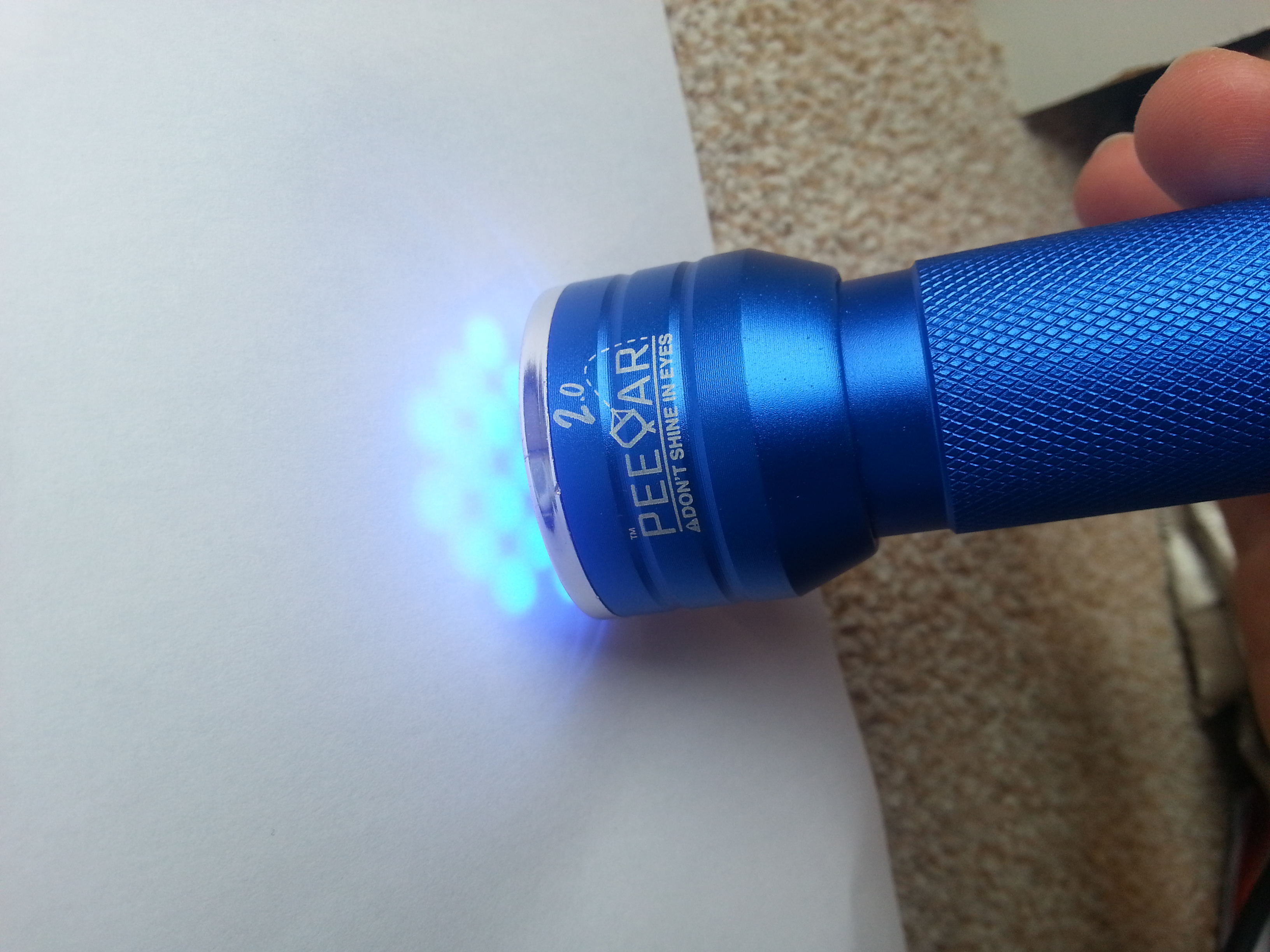
No, not all bacteria have fluorescent molecules, and not all fluorescent bacteria will glow under UV light. The ability to fluoresce depends on the specific molecules present in the bacteria and the conditions under which they are exposed to UV light.
What are some examples of fluorescent bacteria?
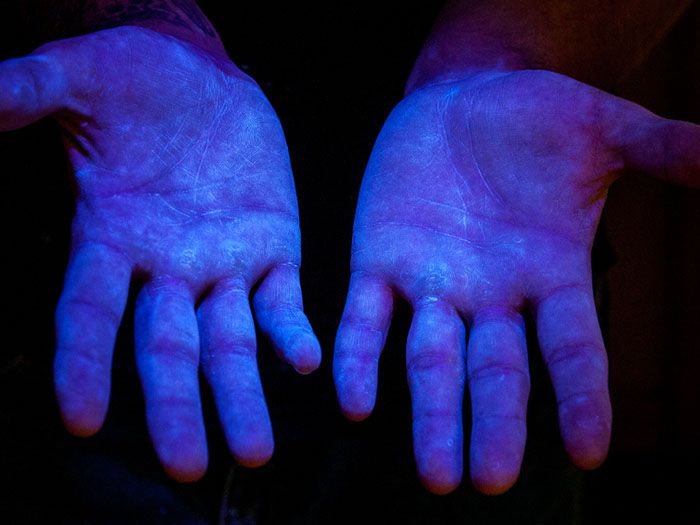
One well-known example of fluorescent bacteria is Vibrio fischeri, a species of bacteria that lives symbiotically with certain marine animals, such as squid and fish. The bacteria produce a blue-green light that helps to camouflage the animals from predators. Another example is Pseudomonas aeruginosa, which produces a green pigment that glows under UV light.
Conclusion
Bacteria glow under UV light due to fluorescence, which is caused by certain molecules within their cells. The ability to fluoresce likely evolved as a way to protect bacteria from UV damage. Fluorescence is a useful tool in microbiology and is used to study and identify bacteria in various settings.
Related video of Why Does Bacteria Glow Under UV Light
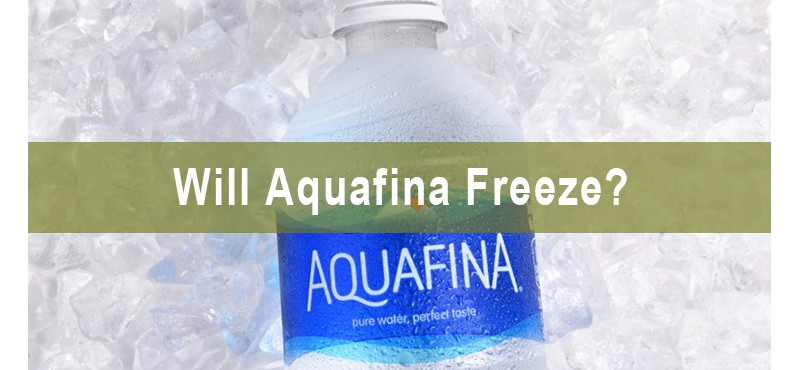
Introduction
Have you ever noticed that Aquafina water bottles don't freeze even when left in the freezer for an extended period? This phenomenon has puzzled many people, and there have been numerous theories and speculations about it. In this article, we'll explore the reason behind Aquafina water's unique ability to resist freezing.The History of Aquafina Water
Aquafina is a bottled water brand that was introduced in the United States in 1994. It is owned by PepsiCo and is one of the best-selling bottled water brands in the world. The water is sourced from public water sources and goes through a rigorous purification process to remove impurities and minerals.The Purification Process
Aquafina water goes through a seven-step purification process that includes reverse osmosis, ultraviolet sterilization, and ozonation. Reverse osmosis is a process that removes impurities and contaminants from water by forcing it through a semi-permeable membrane. Ultraviolet sterilization and ozonation help to kill any remaining bacteria and viruses in the water.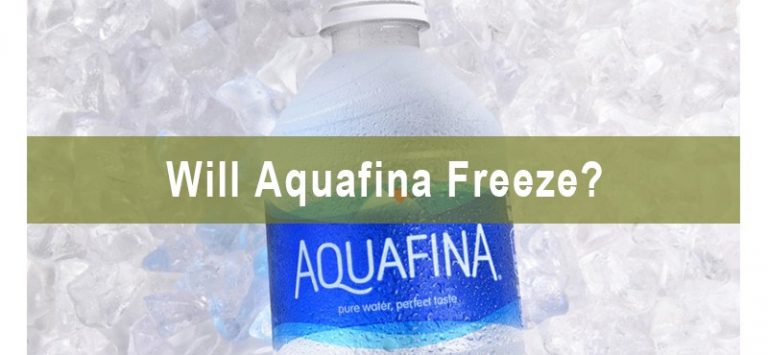
The Role of Minerals in Freezing Water
Water freezes at 32 degrees Fahrenheit (0 degrees Celsius). However, the presence of minerals in water can lower its freezing point. This is why salt is used to melt ice on roads and sidewalks. Salt lowers the freezing point of water, making it harder for ice to form.Aquafina Water and Mineral Content
Aquafina water is purified to remove impurities and minerals, which means that it has a very low mineral content. This low mineral content is one of the reasons why Aquafina water does not freeze as easily as other types of water. The absence of minerals means that the freezing point of Aquafina water is closer to 32 degrees Fahrenheit, making it more resistant to freezing.
The Role of Pressure
Another factor that affects the freezing point of water is pressure. As pressure increases, the freezing point of water decreases. This is why water can stay liquid at temperatures well below freezing in deep oceans and lakes.Aquafina Water and Pressure
Water in a sealed container can experience a buildup of pressure as it freezes. This pressure can cause the container to crack or burst. Aquafina water bottles are designed to withstand this pressure and are made from a durable plastic material that can handle extreme temperatures.
The Science Behind Aquafina Water's Ability to Resist Freezing
Based on the factors mentioned above, the reason why Aquafina water does not freeze as easily as other types of water is due to its low mineral content and the pressure-resistant design of its bottles. The absence of minerals means that the freezing point of Aquafina water is closer to 32 degrees Fahrenheit, making it more resistant to freezing. Additionally, the pressure-resistant design of Aquafina water bottles means that they can withstand the pressure that builds up as the water freezes.Conclusion
In conclusion, Aquafina water's unique ability to resist freezing is due to its low mineral content and the pressure-resistant design of its bottles. The seven-step purification process that Aquafina water goes through removes impurities and minerals, creating a water that is more resistant to freezing. So, the next time you see an Aquafina water bottle in your freezer, remember that there's a scientific reason behind its ability to stay liquid even at temperatures below freezing.Related video of Why Does Aquafina Water Not Freeze?
Have you ever experienced sneezing when you look at the sun? This phenomenon is known as photic sneeze reflex, also called ACHOO syndrome (autosomal dominant compulsive helio-ophthalmic outbursts of sneezing). It is a common occurrence, but not everyone experiences it.
:max_bytes(150000):strip_icc()/sneezing-causes-treatments-83144-v1-07cae8a5db104ce0b56db45a6cb8e7cf.png)
What is photic sneeze reflex?
Photic sneeze reflex is an involuntary response to bright light. It is a genetic trait that affects about 18-35% of the population. People with this condition sneeze when they are exposed to bright light, such as sunlight, fluorescent light, or camera flashes.
The mechanism behind photic sneeze reflex is not fully understood, but it is believed to be related to the trigeminal nerve. The trigeminal nerve is responsible for sensory information from the face, including the nose. When the nerve is stimulated by bright light, it can trigger a sneeze reflex.
Why do some people have photic sneeze reflex?
Photic sneeze reflex is an inherited condition. It is passed down from parents to children through a dominant gene. This means that if one parent has the gene, there is a 50% chance that their child will also have it.
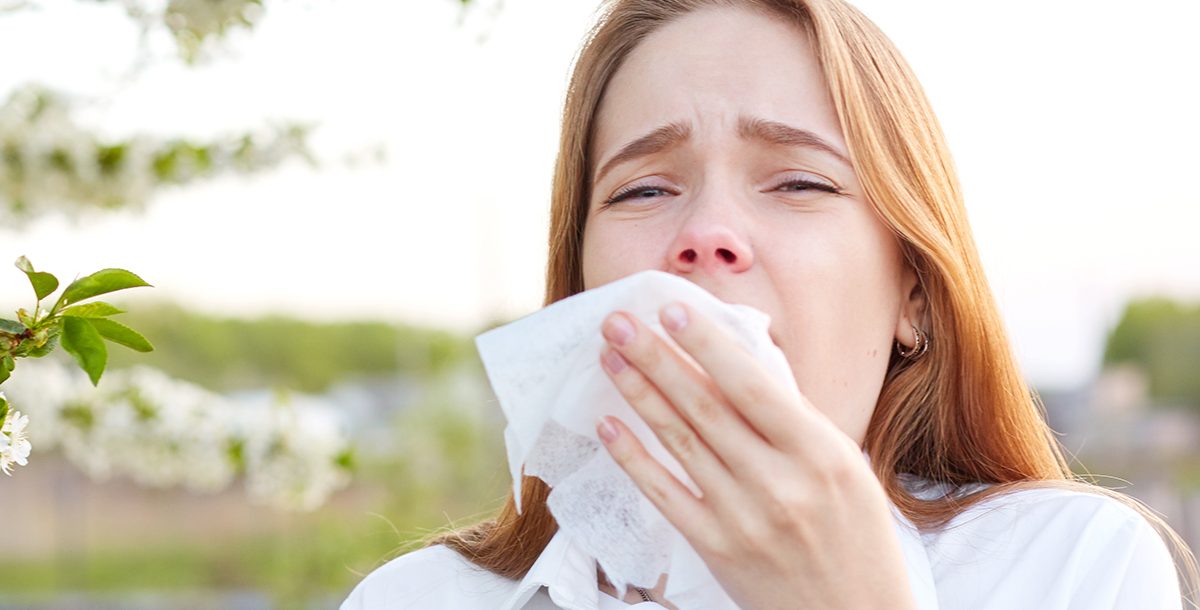
It is not clear why this gene exists or what its purpose is. Some researchers believe that it may have evolved as a protective mechanism to help clear the nose of irritants, such as dust or pollen. Others suggest that it may have no purpose at all and is simply a quirk of human biology.
Is photic sneeze reflex harmful?
Photic sneeze reflex is generally harmless and does not require treatment. However, it can be a nuisance, especially if it occurs frequently or in situations where sneezing is inappropriate, such as during a meeting or while driving.
It is important to note that photic sneeze reflex is not the same as sneezing due to allergies or a cold. If you experience sneezing, runny nose, or other symptoms, it may be due to an underlying condition and you should consult a healthcare professional.

How can you prevent photic sneeze reflex?
There is no known way to prevent photic sneeze reflex. However, you can reduce your exposure to bright light by wearing sunglasses or a hat when you are outside. If you know that you are prone to sneezing in bright light, you can also try closing your eyes or looking away when you are exposed to it.
Conclusion
Photic sneeze reflex is a common and harmless condition that affects many people. It is caused by a genetic trait and is not fully understood. While it can be a nuisance, it does not require treatment and can be managed by reducing exposure to bright light. If you experience frequent or severe sneezing, you should consult a healthcare professional to rule out any underlying conditions.
Related video of Why Do You Sneeze When You Look At The Sun

Have you ever experienced a sudden and involuntary contraction of your diaphragm muscle followed by a sharp intake of breath? If you have, then you have experienced hiccups. Hiccups are a common and usually harmless phenomenon that affects people of all ages. In this article, we will explore the causes of hiccups and some remedies to get rid of them.
What are Hiccups?

Hiccups, also known as synchronous diaphragmatic flutter (SDF), are involuntary contractions of the diaphragm muscle. The diaphragm is a dome-shaped muscle that separates the chest cavity from the abdominal cavity and plays a crucial role in breathing. When the diaphragm contracts involuntarily, it causes a sudden intake of breath, which is then followed by the closure of the vocal cords, producing the characteristic "hic" sound.
What Causes Hiccups?

The exact cause of hiccups is not fully understood, but there are several factors that can trigger them. Some common causes of hiccups include:
- Eating or drinking too quickly
- Consuming alcohol or carbonated drinks
- Smoking
- Excitement or emotional stress
- Swallowing air while chewing gum or sucking on candy
- Changes in temperature or humidity
- Some medications
- Stomach distension or irritation
- Damage to the nerves that control the diaphragm
How to Get Rid of Hiccups?

Most cases of hiccups are short-lived and do not require medical attention. However, if hiccups persist for more than 48 hours, it is recommended to see a doctor. Here are some remedies that may help get rid of hiccups:
- Hold your breath for a few seconds
- Breathe into a paper bag
- Sip cold water
- Gargle with ice-cold water
- Bite on a lemon or suck on a piece of lemon
- Swallow a teaspoon of sugar or honey
- Pull your knees up to your chest and lean forward
- Massage the carotid sinus in the neck
When to Seek Medical Attention?

Most cases of hiccups are harmless and go away on their own. However, if hiccups persist for more than 48 hours or are accompanied by other symptoms such as difficulty swallowing, chest pain, or vomiting, it is recommended to seek medical attention. In rare cases, hiccups can be a sign of an underlying medical condition such as gastroesophageal reflux disease (GERD), pneumonia, or stroke.
Preventing Hiccups

Although hiccups cannot always be prevented, there are some measures you can take to reduce the risk of getting them. These include:
- Eating and drinking slowly
- Avoiding alcohol and carbonated drinks
- Quitting smoking
- Avoiding sudden changes in temperature or humidity
- Avoiding chewing gum or sucking on candy
- Avoiding overeating or eating spicy foods
- Managing stress and anxiety
Conclusion
Hiccups are a common and usually harmless phenomenon that affect people of all ages. Although the exact cause of hiccups is not fully understood, there are several factors that can trigger them. Most cases of hiccups are short-lived and do not require medical attention. However, if hiccups persist for more than 48 hours or are accompanied by other symptoms, it is recommended to seek medical attention. There are several remedies that may help get rid of hiccups, and some measures you can take to reduce the risk of getting them.
Related video of Why Do You Get Hiccups
Baking is an art that requires precision and attention to detail. A slight variation in the ingredients or the measurement can significantly affect the outcome of the finished product. One of the essential ingredients in baking is salt. Salt is a mineral that has been used for centuries to enhance the flavor of food. In this article, we will discuss why we use salt in baking and its significance in the baking process.
What is Salt?
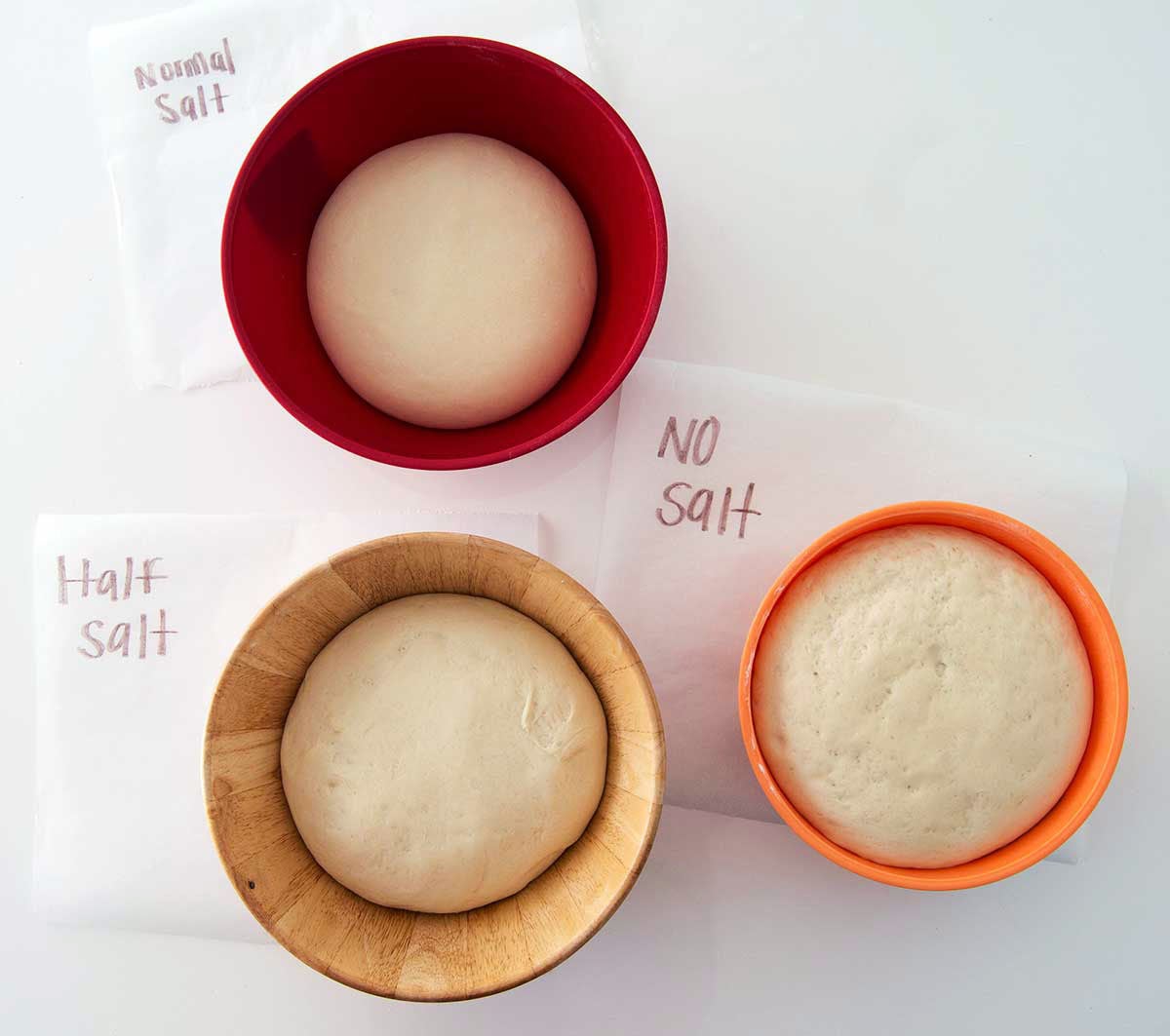
Salt, also known as sodium chloride, is a mineral that occurs naturally in the earth's crust. It is composed of two elements: sodium and chlorine. Salt is commonly used as a seasoning and a preservative in foods. It is also an essential nutrient that plays a vital role in maintaining the body's fluid balance and regulating blood pressure.
Why Do We Use Salt In Baking?
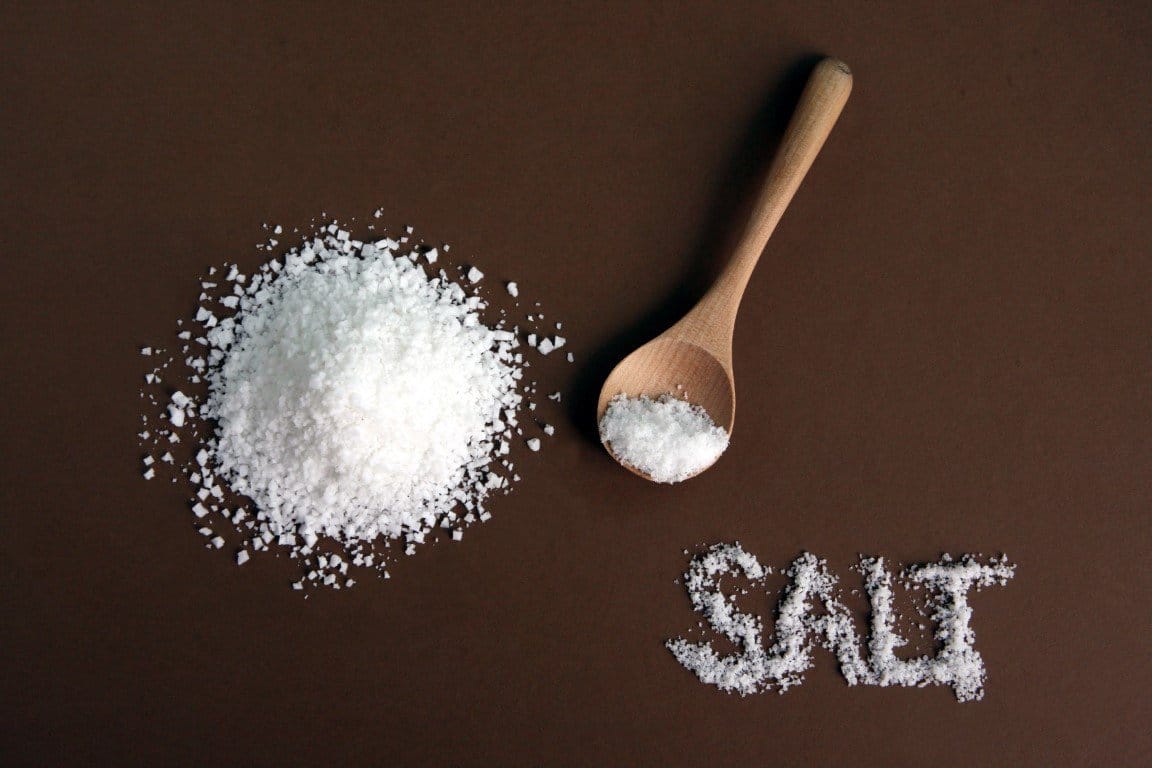
Salt is a crucial ingredient in baking, and it serves several purposes. Firstly, it enhances the flavor of the baked goods. Salt improves the taste of the ingredients in the recipe and balances the sweetness. Secondly, salt is a natural preservative that helps to extend the shelf life of the baked goods. It inhibits the growth of bacteria and prevents spoilage. Lastly, salt strengthens the gluten in the dough, which creates a more robust structure and texture in the baked goods.
How Much Salt Should You Use In Baking?

The amount of salt you use in baking depends on the recipe and personal preference. As a general rule, you should use about 1/2 teaspoon of salt for every cup of flour in a recipe. However, you can adjust the amount of salt based on your taste preference. It is essential to measure the salt accurately to avoid over-salting or under-salting the baked goods.
Types of Salt Used in Baking
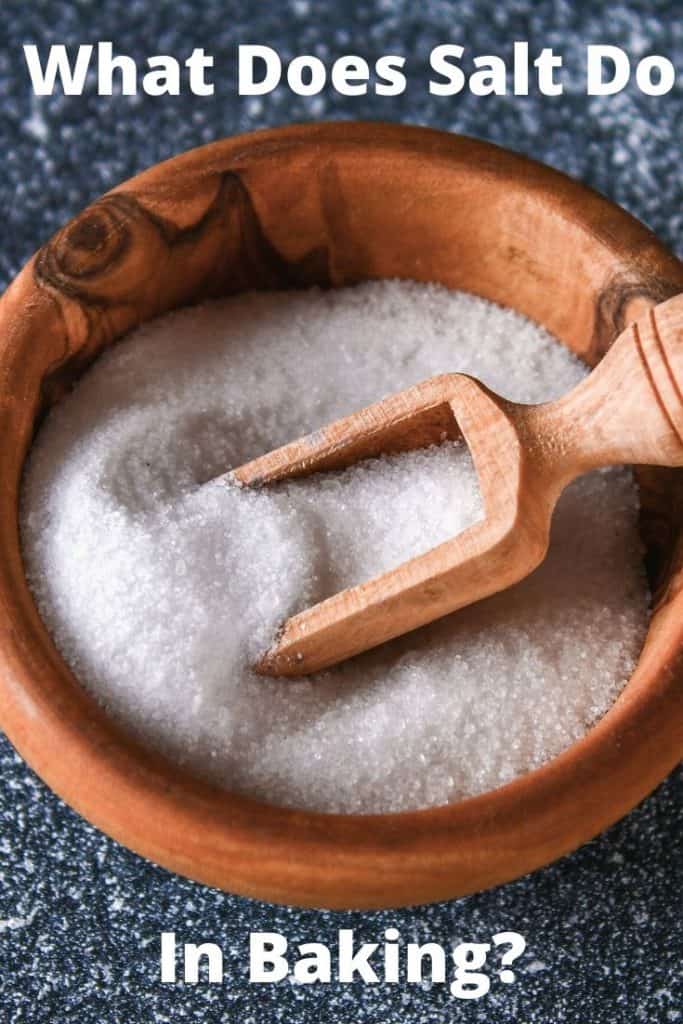
There are different types of salt available in the market, and each has its unique flavor and texture. In baking, you can use any type of salt, but some are more commonly used than others. Here are some of the most common types of salt used in baking:
- Table Salt: This is the most common type of salt used in baking. It is fine-grained and highly processed, which makes it easy to measure and dissolve in the dough.
- Kosher Salt: This type of salt is coarser than table salt and has a more substantial texture. It is less processed and has no additives, which makes it a healthier option.
- Sea Salt: Sea salt is harvested from evaporated seawater and has a more natural flavor than table salt. It is available in different textures, from fine to coarse, and adds a unique taste to the baked goods.
Conclusion
Salt is an essential ingredient in baking, and it serves several purposes. It enhances the flavor of the baked goods, acts as a natural preservative, and strengthens the gluten in the dough. It is crucial to measure the salt accurately and use the right type of salt in baking to achieve the desired outcome. So, the next time you bake, don't forget to add a pinch of salt to enhance the flavor and texture of your baked goods.
Related video of Why Do We Use Salt In Baking

Introduction
Have you ever wondered why we have tears when we yawn? It's a common phenomenon that happens to almost everyone. Yawning is a natural reflex that occurs when we feel tired or sleepy. But why do tears come out of our eyes when we yawn? In this article, we will explore this topic and find out the reasons behind it.The Science Behind Yawning
Yawning is a reflex action that involves inhaling deeply and exhaling slowly. The act of yawning helps to increase the oxygen supply to our brain and body. It also helps to regulate the temperature of our brain. When we yawn, our mouth opens wide, and our eardrums stretch. This action helps to equalize the pressure in our ears.The Connection Between Yawning and Tears
When we yawn, our eyes can become watery. This happens because the act of yawning stimulates the tear glands in our eyes. These glands produce tears, which then flow out of our eyes. This can make us look like we are crying, but the tears are not due to any emotional response.
The Function of Tears
Tears play an important role in keeping our eyes healthy. They help to lubricate and moisturize our eyes, which keeps them from drying out. Tears also contain special proteins and enzymes that help to fight against infections. When we cry, tears can also help to flush out any foreign particles or irritants that may be in our eyes.The Different Types of Tears
Did you know that there are different types of tears? The tears that come out when we yawn are called reflex tears. They are produced in response to a stimulus, such as yawning or an irritant in our eyes. Emotional tears, on the other hand, are produced in response to strong emotions, such as sadness or joy. Basal tears are the tears that keep our eyes moist and lubricated throughout the day.
Why Do We Yawn?
Yawning is a natural reflex that occurs in response to a variety of stimuli. We yawn when we feel tired, bored, or even hungry. It's also contagious, which means that when we see someone else yawn, we are more likely to yawn ourselves. Scientists are still trying to understand why we yawn and what purpose it serves, but it's clear that it's an important function of our body.The Contagious Nature of Yawning
Have you ever noticed that when someone yawns, it can make you yawn too? This is because yawning is contagious. When we see someone else yawn, it triggers a response in our brain that makes us want to yawn too. This phenomenon is known as contagious yawning and is thought to be linked to empathy and social bonding.
The Benefits of Yawning
Yawning may seem like a simple reflex, but it has many benefits. Yawning helps to increase the oxygen supply to our brain and body, which can help to improve our mental and physical performance. Yawning also helps to regulate the temperature of our brain, which can help us to stay alert and focused. Additionally, yawning may help to reduce stress and anxiety.The Myths About Yawning
There are many myths about yawning, such as the idea that it is a sign of boredom or rudeness. However, these myths are not supported by scientific evidence. Yawning is a natural reflex that occurs for a variety of reasons, and there is no evidence to suggest that it is a negative or harmful behavior.
Conclusion
In conclusion, tears when we yawn are a natural response of our body. It occurs when the act of yawning stimulates the tear glands in our eyes. Tears play an important role in keeping our eyes healthy, and there are different types of tears. Yawning is a natural reflex that occurs for a variety of reasons and has many benefits. So the next time you yawn and tears come out of your eyes, you can rest assured that it's a normal and healthy response of your body.Related video of Why Do We Have Tears When We Yawn
Introduction
Valentine's Day is celebrated every year on the 14th of February. It is a day when people express their love and affection towards their loved ones. This day is celebrated in many countries around the world, and it has become a popular day to show love and appreciation for those we care about.
The History of Valentine's Day
The history of Valentine's Day is shrouded in mystery, and there are many different stories about how it came to be celebrated. One of the most popular stories is that Valentine was a Christian priest who lived in Rome in the third century. He was known for performing secret marriages for young couples, which was against the law at the time.
Valentine was eventually caught and sentenced to death. While he was awaiting execution, he fell in love with the jailer's daughter and wrote her a letter expressing his love for her. The letter was signed "From your Valentine," which is a phrase that is still used today.

Valentine's Day Traditions
Valentine's Day is a day for expressing love, and there are many different traditions associated with the day. One of the most popular traditions is to give gifts to loved ones, such as chocolates, flowers, and cards. Many people also celebrate by going out for a romantic dinner or by taking a weekend getaway.
Another tradition associated with Valentine's Day is the exchange of Valentine's Day cards. These cards can be purchased or handmade, and they often feature images of hearts, cupids, and other romantic symbols. Some people also choose to write their own messages in the cards, expressing their love and affection for their partner.

Valentine's Day Around the World
Valentine's Day is celebrated in many different countries around the world, although the traditions and customs can vary from country to country. In the United States, for example, it is common for people to exchange gifts and cards, while in Japan, it is traditional for women to give chocolates to men on Valentine's Day.
In some countries, Valentine's Day is not just a day for romantic love, but also a day to celebrate friendship. In Finland, for example, Valentine's Day is called Ystävänpäivä, which means "Friendship Day," and people often exchange gifts and cards with their friends and family members.
Celebrating Valentine's Day With Kids
Valentine's Day is not just for couples in love; it is also a great day to celebrate with kids. Many parents choose to make Valentine's Day cards with their children, or to bake heart-shaped cookies or cupcakes. Some families also like to have a special dinner together or to watch a romantic movie.
Valentine's Day can also be a great opportunity to teach kids about love and kindness. Parents can talk to their children about the importance of showing love and affection towards others, and about the different ways that people can express their love.

Celebrating Valentine's Day as a Single Person
Valentine's Day is often associated with couples in love, but it can also be a great day to celebrate as a single person. Many people choose to spend the day doing something special for themselves, such as getting a massage, going for a hike, or treating themselves to a fancy dinner.
Some single people also choose to celebrate Valentine's Day with their friends. They may have a Valentine's Day party, exchange cards and gifts, or simply spend time together doing something fun.
Conclusion
Valentine's Day is a day for celebrating love and affection, and it is a popular holiday around the world. Whether you are in a relationship or single, there are many different ways to celebrate this special day. So why not take the opportunity to show your loved ones how much you care?
Related video of Why Do We Celebrate Valentine's Day
ads
Search This Blog
Blog Archive
- October 2022 (15)
- September 2022 (30)
- August 2022 (31)
- July 2022 (31)
- June 2022 (31)
- May 2022 (31)
- April 2022 (29)
- March 2022 (32)
- February 2022 (20)
About Me
